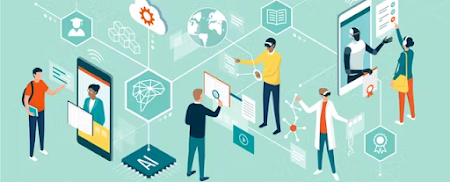**A Levels Mathematics Crash Course**
Aims and Objectives:
The A Levels Mathematics Crash Course is designed with the following objectives:
1. Comprehensive Review: Ensure a thorough review of key A Levels Mathematics concepts.
2. Problem-solving Proficiency: Enhance students' problem-solving skills and strategies.
3. Exam Readiness: Prepare students for A Levels examinations with targeted and efficient study techniques.
Rationale:
The rationale behind this crash course is to address the time constraints and specific needs of students facing A Levels examinations. The course aims to provide a focused and accelerated learning experience, enabling students to reinforce their understanding of essential mathematical principles and optimize their exam performance.
Teaching Context:
The teaching context is dynamic and technology-driven. The crash course utilizes a blended learning approach, combining traditional face-to-face sessions with technology-driven resources. The course is conducted in an intensive workshop setting, fostering an interactive and collaborative learning environment.
Types of Activities Developed:
1. Virtual Labs and Simulations:
- Activity Type: Interactive simulations for calculus and geometry concepts.
- Relation to Learning Theories: Grounded in the experiential learning theory, virtual labs allow students to manipulate mathematical variables, enhancing understanding through hands-on exploration.
2. Gamified Learning Platforms:
- Activity Type: Math-based games for reinforcement.
- Relation to Learning Theories: Aligned with the behaviorist theory, gamified activities offer immediate feedback, positive reinforcement, and a competitive element, motivating students to actively engage with the material.
3. Collaborative Problem-solving Webinars:
- Activity Type: Online group problem-solving sessions.
- Relation to Learning Theories: Rooted in the social constructivist theory, collaborative webinars encourage students to share diverse problem-solving strategies, fostering a community of learners who collectively construct knowledge.
4. AI-Enhanced Adaptive Assessments:
- Activity Type: AI-driven adaptive assessments.
- Relation to Learning Theories:Drawing from constructivist and cognitivist theories, adaptive assessments adjust difficulty based on individual performance, promoting a personalized learning experience.
5. Flipped Classroom Video Lectures:
- Activity Type: Pre-recorded video lectures for independent learning.
- Relation to Learning Theories: Aligned with the flipped classroom model, video lectures serve as pre-learning resources, allowing students to absorb foundational content at their own pace before engaging in more interactive sessions.
Technology Use:
The crash course maximizes technology use by incorporating learning management systems (LMS) for resource dissemination, virtual collaboration tools for interactive sessions, and AI-powered platforms for adaptive assessments. Additionally, online forums and discussion boards facilitate continuous communication and peer interaction.
In conclusion, the A Levels Mathematics Crash Course embraces technology to create an immersive and adaptive learning experience. The activities developed align with various learning theories, ensuring that students benefit from a well-rounded, collaborative, and technology-enhanced preparation for A Levels mathematics examinations.
Link to course:
https://classroom.google.com/c/NDU4MDUxNDc2MjY3?cjc=3rwcqwo
3rwcqwo









